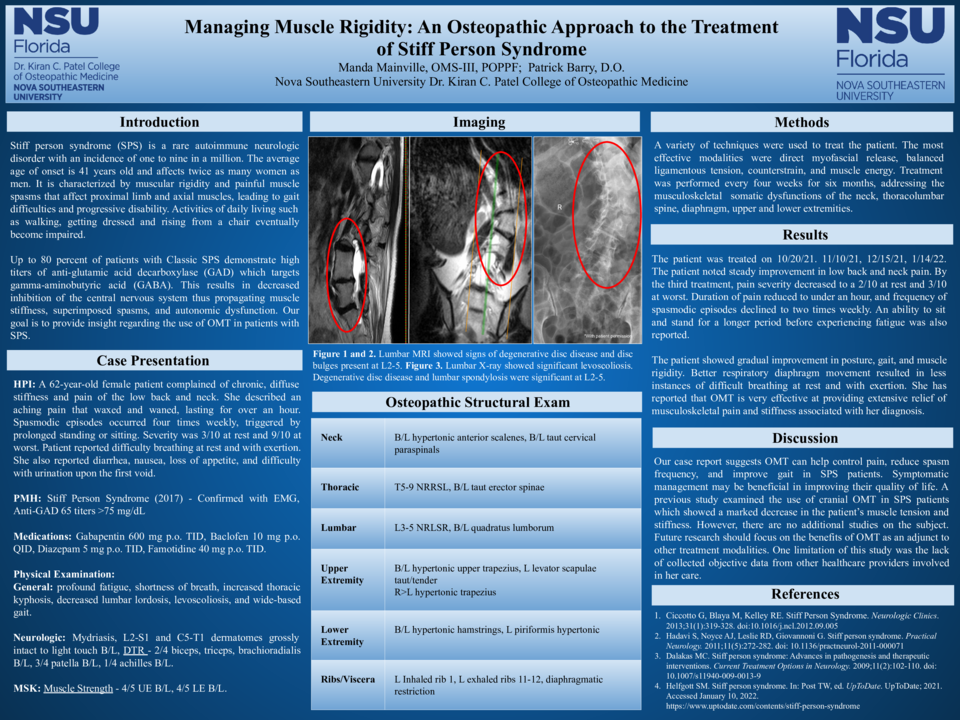Abstract
Introduction: Stiff person syndrome (SPS) is a rare autoimmune neurologic disorder with an incidence of one to nine in a million. It is characterized by muscular rigidity and painful muscle spasms that affect proximal limb and axial muscles, leading to gait difficulties and progressive disability. Up to 80 percent of patients with Classic SPS demonstrate high titers of anti-glutamic acid decarboxylase (GAD) which targets the inhibitory neurotransmitter gamma-aminobutyric acid (GABA). This results in decreased inhibition of the central nervous system thus propagating muscle stiffness, superimposed spasms, and autonomic dysfunction. Current literature lacks research describing the effects of OMT on symptomatic management in SPS patients. We hypothesize that osteopathic manipulative treatment (OMT) can help control pain, reduce spasm frequency, and improve gait in SPS patients.
Case Description: A 62-year-old female patient presented to the osteopathic treatment center with complaints of chronic, diffuse stiffness and pain in the low back and neck. Past medical history includes diagnosis of SPS four years ago via electromyography studies and elevated anti-GAD65 titers. She described an aching pain, episodic burning on the anterior thighs, and intermittent spasms that waxed and waned for over an hour. The severity of pain was a 3/10 at rest and a 9/10 at worst. Physical examination revealed profound fatigue, shortness of breath, increased thoracic kyphosis, decreased lumbar lordosis, levoscoliosis, and wide-based gait. Musculoskeletal examination demonstrated 5/5 muscle strength of the upper and lower extremities, bilaterally. Neurologic examination demonstrated 3+ patellar and 1+ Achilles deep tendon reflexes, C5-T1 and L2-S1 dermatomes intact to light touch, and a negative Hoffman’s sign. The patient was seen every four weeks for six months. The osteopathic structural examination revealed somatic dysfunctions of the head, neck, thoracolumbar spine, ribs, diaphragm, upper and lower extremities. Osteopathic treatments included osteopathic cranial manipulative medicine, direct myofascial release, counterstrain, muscle energy, visceral manipulation, and balanced ligamentous tension. By the third treatment, pain severity decreased to a 2/10, duration reduced to under an hour, and frequency of weekly spasmodic episodes declined. An ability to sit and stand for a longer period before experiencing fatigue was reported.
Discussion: Our case report suggests OMT can help control pain, reduce spasm frequency, and improve gait in SPS patients. Symptomatic management may be beneficial in improving their quality of life. A previous study examined the use of cranial OMT in SPS patients which showed a marked decrease in the patient’s muscle tension and stiffness, however, there are no additional studies on the subject. One limitation of this study was the lack of collected objective data from other healthcare providers involved in her care. Future research should focus on the benefits of OMT as an adjunct to other treatment modalities.






